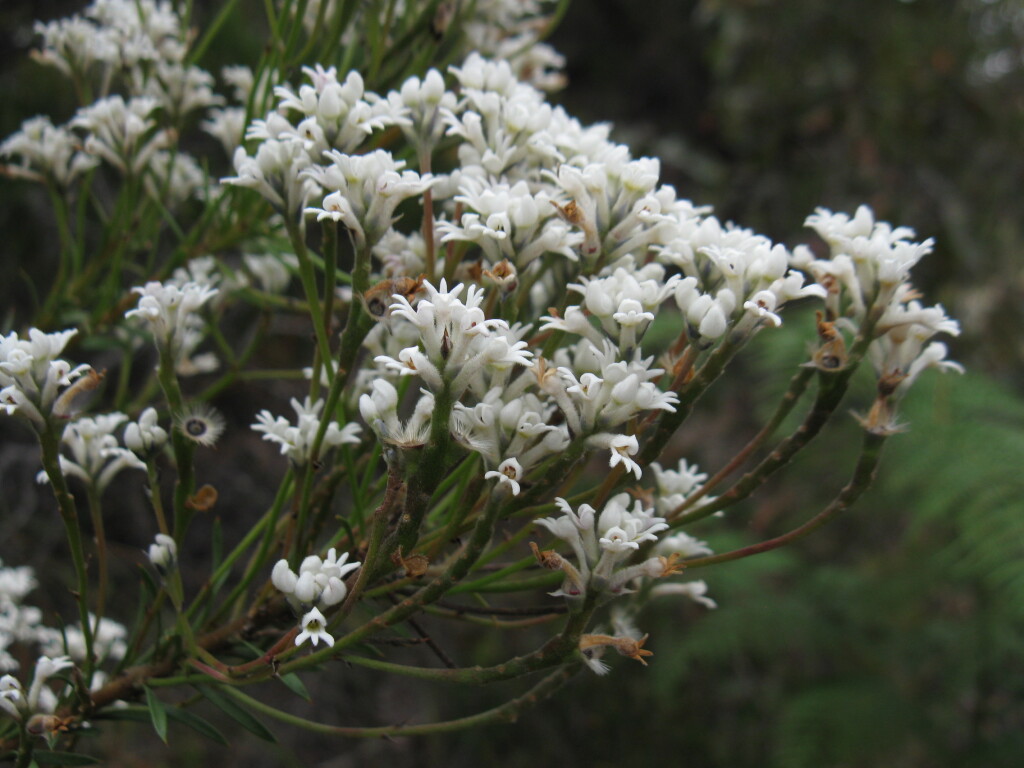Conospermum taxifolium
Sm. Variable Smoke-bushErect shrub to c. 1 m high; branches hoary-tomentose, glabrescent. Leaves crowded, erect or spreading, linear, narrowly elliptic to narrowly oblanceolate, 5–30 mm long, mostly 1.5–3 mm wide, often twisted, green, both surfaces usually glabrous; apex acute, aristate. Inflorescence a terminal or upper-axillary corymbose panicle, mostly 1–3 cm across; common peduncles ascending, mostly 1–3 cm long, not significantly longer than branches of inflorescence; flowers arranged in short, dense, pedunculate spikes, each flower sessile, subtended by a blue-grey, persistent bract c. 3 mm long; perianth tubular at base, splitting c. two-thirds of the way up; tepals 6–7 mm long, white or cream, moderately hairy; ovary comose at apex, also ringed by basal hairs. Nut 2–3 mm long, hairy. Flowers Aug.–Nov.
EGL, EGU. Also Qld, NSW, ACT (Jervis Bay), Tas. Rare in Victoria where confined to grass-tree plains of far East Gippsland in the vicinity of Mallacoota Inlet.
Johnson & McGillivray (1975) recognize a number of informal forms of this highly polymorphic species. Victorian populations are referable to the 'common form' which is characterized by rather short, narrow, almost linear, smooth, glabrous leaves.
Jeanes, J.A. (1996). Proteaceae. In: Walsh, N.G.; Entwisle, T.J., Flora of Victoria Vol. 3, Dicotyledons Winteraceae to Myrtaceae, pp. 830–887. Inkata Press, Melbourne.
 Spinning
Spinning

